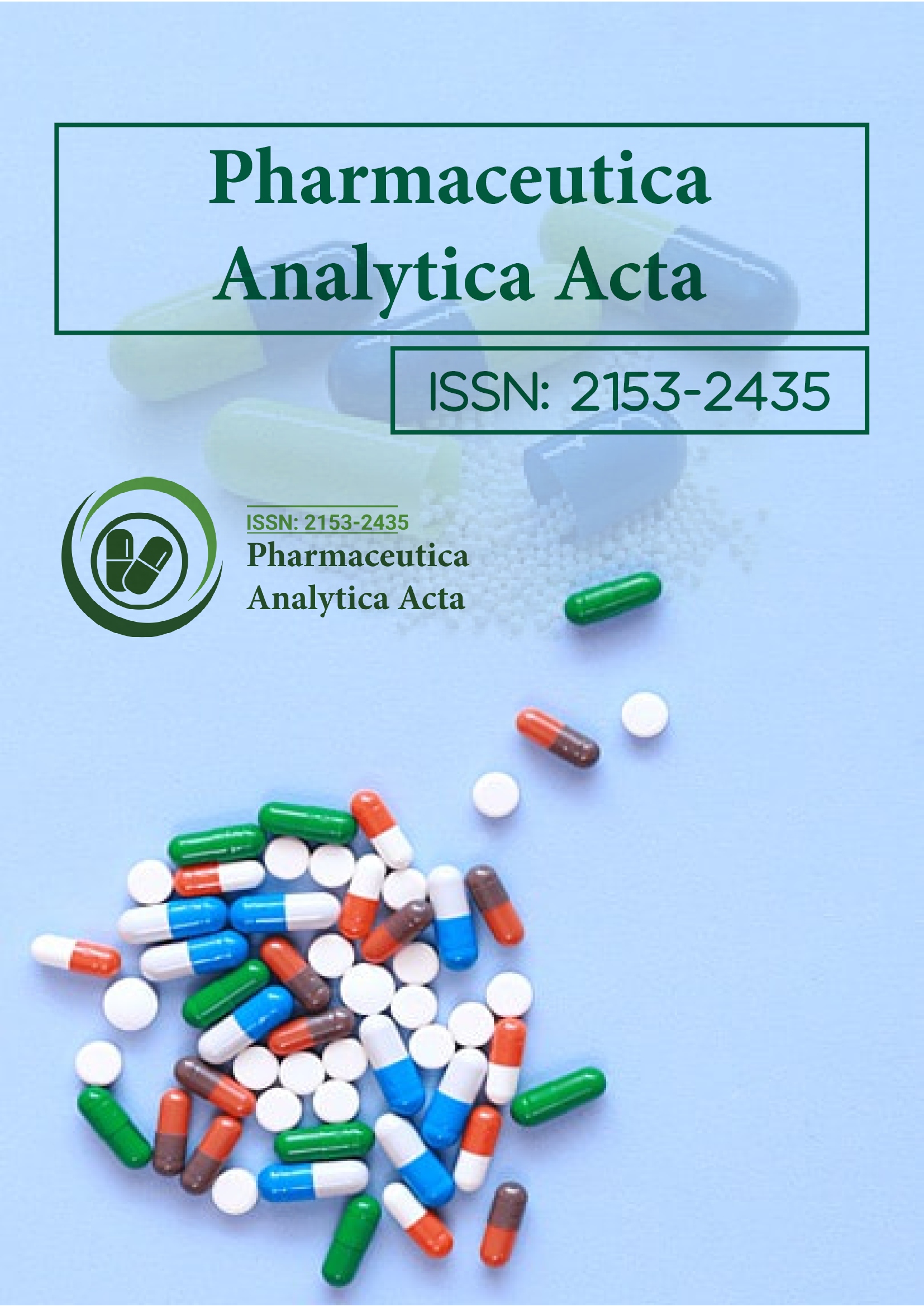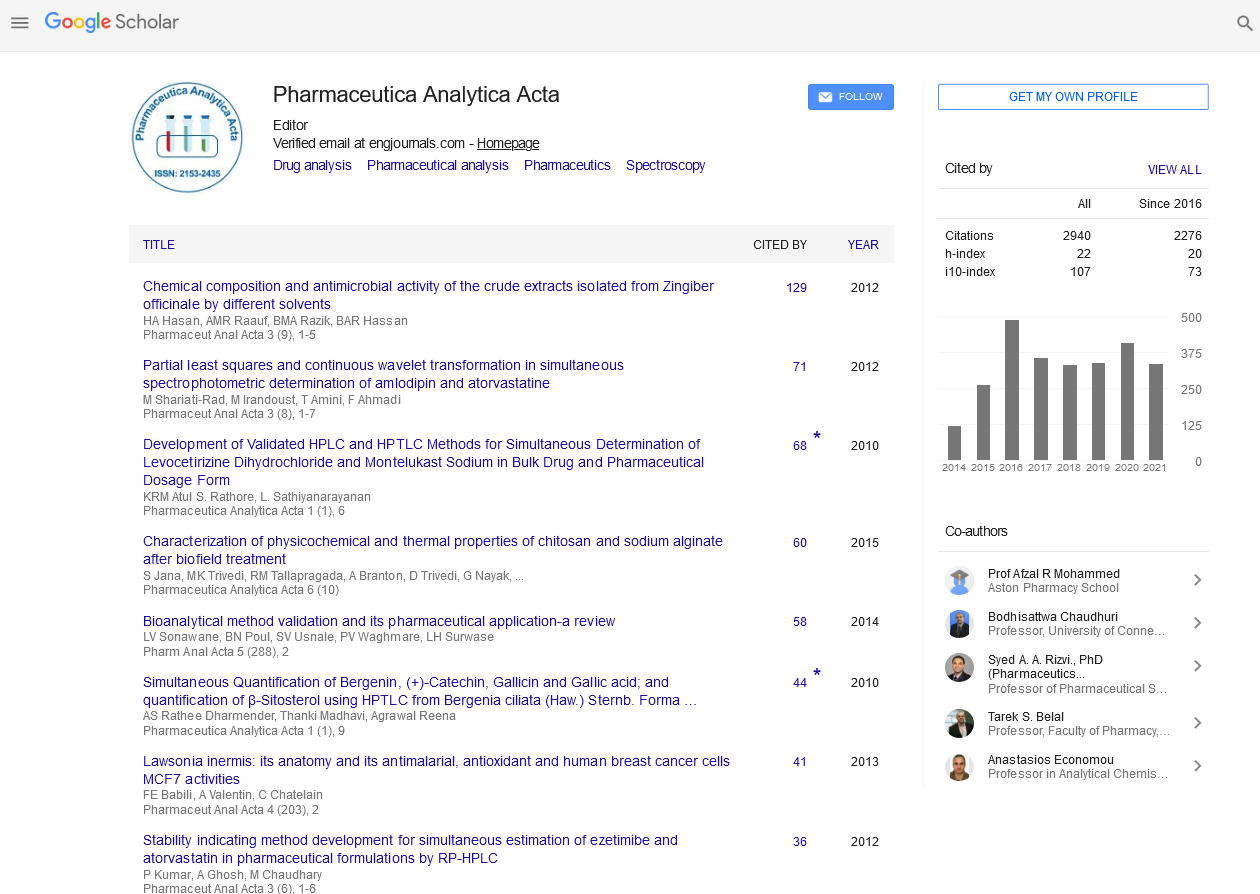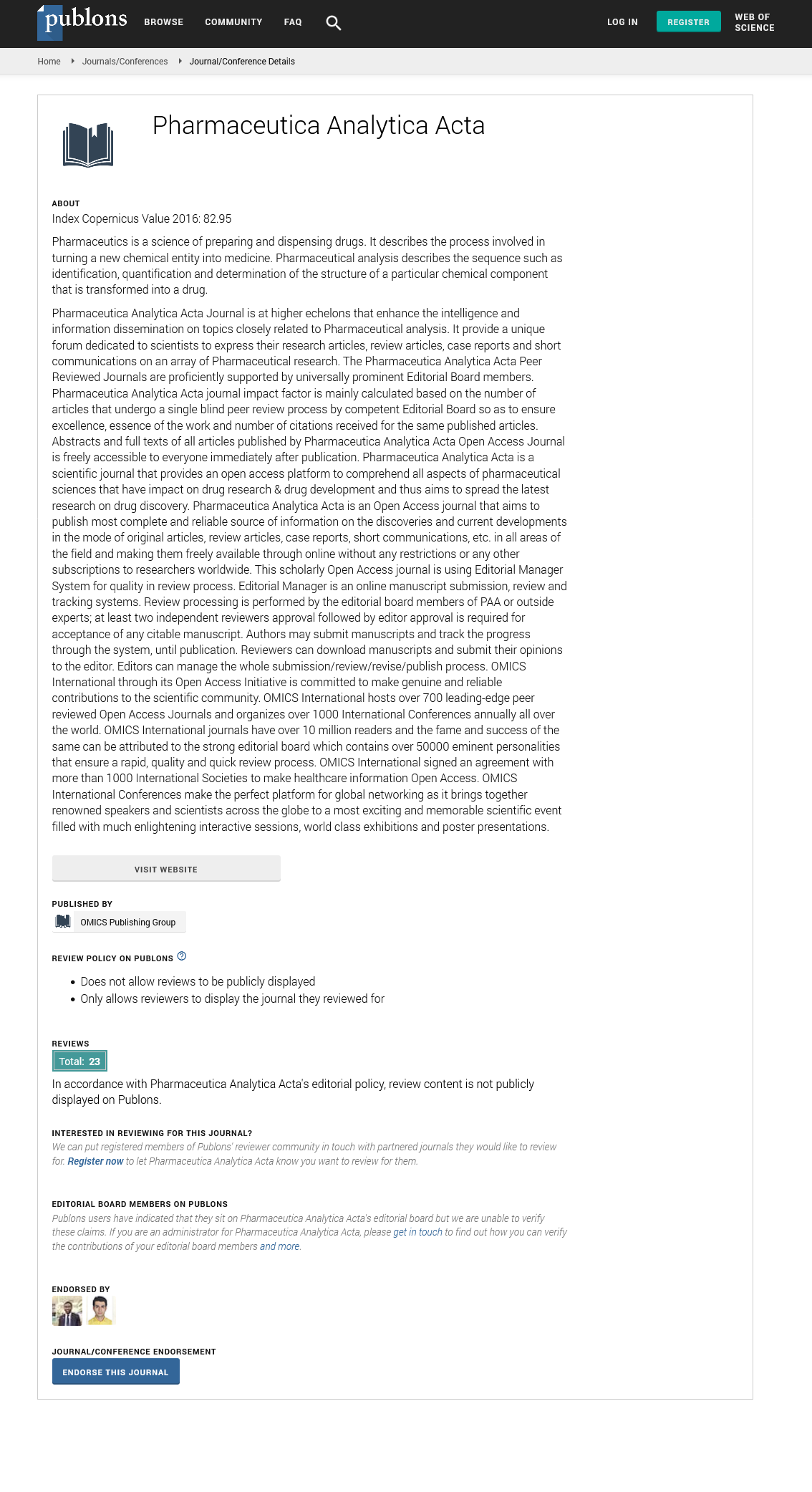Indexed In
- Open J Gate
- Genamics JournalSeek
- Academic Keys
- JournalTOCs
- The Global Impact Factor (GIF)
- China National Knowledge Infrastructure (CNKI)
- Ulrich's Periodicals Directory
- RefSeek
- Hamdard University
- EBSCO A-Z
- OCLC- WorldCat
- Publons
- Geneva Foundation for Medical Education and Research
- Euro Pub
- Google Scholar
Useful Links
Share This Page
Journal Flyer

Open Access Journals
- Agri and Aquaculture
- Biochemistry
- Bioinformatics & Systems Biology
- Business & Management
- Chemistry
- Clinical Sciences
- Engineering
- Food & Nutrition
- General Science
- Genetics & Molecular Biology
- Immunology & Microbiology
- Medical Sciences
- Neuroscience & Psychology
- Nursing & Health Care
- Pharmaceutical Sciences
Commentary Article - (2025) Volume 16, Issue 2
Advances in Bioanalytical Chemistry within Pharmaceuticals
Emily Brown*Received: 31-May-2025, Manuscript No. PAA-25-30216; Editor assigned: 02-Jun-2025, Pre QC No. PAA-25-30216; Reviewed: 16-Jun-2025, QC No. PAA-25-30216; Revised: 21-Jun-2025, Manuscript No. PAA-25-30216; Published: 30-Jun-2025, DOI: 10.35248/2153-2435.25.16.814
Description
In recent years, the analysis of biological molecules such as proteins, peptides, nucleic acids and metabolites has become an essential component of pharmaceutical research. As the pharmaceutical industry moves toward biologically derived therapeutics and personalized medicine, bioanalytical chemistry has evolved into a cornerstone of both drug discovery and clinical development. The ability to accurately measure biomolecules in complex biological systems provides insights into how a drug behaves within the body, how it interacts with its targets and how long it remains active. These insights are critical for assessing safety, efficacy and dosing strategies during the development of modern therapeutics. Bioanalytical chemistry bridges analytical science and biology through advanced measurement techniques capable of handling complex biological matrices such as blood, plasma, tissue, or cellular extracts. Among these techniques, mass spectrometry has emerged as one of the most powerful tools for quantifying biomolecules at very low concentrations. It allows for precise identification of proteins, metabolites and drug derivatives, even in the presence of interfering substances. Many laboratories adapt traditional mass-spectrometric systems by optimizing ionization modes, fragmentation conditions and chromatographic separation to achieve higher sensitivity for biomolecular detection. This has become particularly important in therapeutic drug monitoring, pharmacokinetic studies and biomarker identification.
In addition to mass spectrometry, immunoassays and ligand-binding methods continue to play a significant role in bioanalytical workflows. Enzyme-Linked Immuno Sorbent Assays (ELISA), radio immunoassays and fluorescence-based binding assays provide sensitive platforms for measuring proteins and peptides. These assays rely on the specific binding interactions between antigens and antibodies, enabling detection of biological molecules even at pictogram levels. Hybrid approaches that combine chromatographic separation with mass spectrometric detection are also widely employed to improve selectivity and reduce background interference. Such hybrid systems have become standard in pharmacokinetic studies, where precise quantification of drugs and their metabolites in biological samples is necessary for understanding absorption, distribution, metabolism and excretion. The evaluation of pharmacokinetics and pharmacodynamics depends on the accurate quantification of low-abundance biomolecules. Measuring drug metabolites or drug-protein adducts in vivo demands well-designed analytical methods and stringent validation. Researchers must account for variables such as matrix effects, sample degradation and recovery rates. Validation ensures that the method remains consistent across multiple runs, instruments and analysts. Parameters like accuracy, precision, linearity and stability are tested thoroughly before a method can be applied in a regulatory or clinical setting. In the bioanalytical field, reproducibility is of utmost importance, as even slight deviations can alter the interpretation of biological data.
Recent technological progress has also introduced new analytical platforms that complement traditional methods. Microfluidic systems, for instance, have transformed bioanalysis by miniaturizing laboratory functions onto small chip-based devices. These systems handle microliter or nanoliter sample volumes, reducing reagent consumption and enabling faster turnaround times. Microfluidics has proven useful in drug screening, enzymatic assays and single-cell analysis, offering new levels of sensitivity and efficiency. Similarly, biosensor technology has opened opportunities for real-time and label-free detection of biomolecules. Surface Plasmon resonance, electrochemical biosensors and optical sensors are being developed to monitor interactions between drugs and biological targets, allowing immediate assessment without complex sample preparation. As biopharmaceuticals continue to grow in significance covering therapeutic proteins, monoclonal antibodies, vaccines, oligonucleotides and gene therapy vectors, the analytical requirements for evaluating them become increasingly sophisticated. Unlike small-molecule drugs, these biologics are structurally complex and sensitive to environmental changes. Analytical scientists must adapt their workflows to account for large molecular weights, multiple charge states, post-translational modifications and stability concerns. Techniques such as capillary electrophoresis, high-resolution mass spectrometry and hydrophobic interaction chromatography are often integrated into biopharmaceutical characterization. Each provides unique insights into molecular structure, purity and biological activity.
In addition, advances in bioinformatics and data processing have begun to influence bioanalytical practices. The interpretation of complex datasets generated from proteomic or metabolomics experiments requires computational support. Software tools now enable automated peak detection, isotopic correction and quantitative calibration across thousands of analytes. Artificial intelligence and machine learning algorithms are being explored to detect hidden patterns within bioanalytical datasets, potentially predicting drug responses or identifying unexpected metabolites. These computational methods are rapidly becoming essential in handling the growing volume of data produced by high-throughput analytical instruments.
Another area of growing importance is the development of high-throughput and automated bioanalytical systems. Automation reduces manual error, increases sample throughput and maintains consistent performance over large study cohorts. Liquid-handling robots, automated plate readers and integrated analytical platforms now allow laboratories to process hundreds of samples per day, a requirement in large-scale pharmacokinetic and clinical studies. Automation also ensures uniform sample preparation, which is critical when working with complex biological materials. Despite these advances, bioanalytical scientists continue to face challenges. Biological samples often contain endogenous compounds that interfere with analytic detection, a phenomenon known as matrix suppression. Furthermore, the instability of biomolecules, variability in biological matrices and stringent regulatory demands add layers of complexity to analytical validation.
Citation: Brown E (2025). Advances in Bioanalytical Chemistry within Pharmaceuticals. Pharm Anal Acta. 16:814.
Copyright: © 2025 Brown E. This is an open-access article distributed under the terms of the Creative Commons Attribution License, which permits unrestricted use, distribution and reproduction in any medium, provided the original author and source are credited


